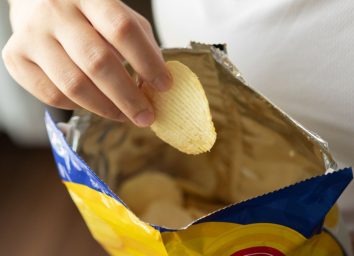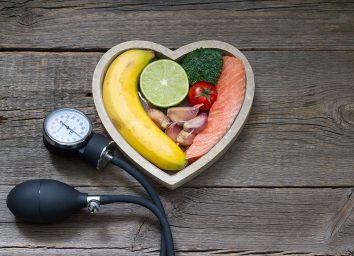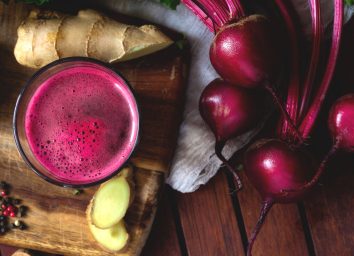4 Best Eating Habits for High Blood Pressure, Says Dietitian
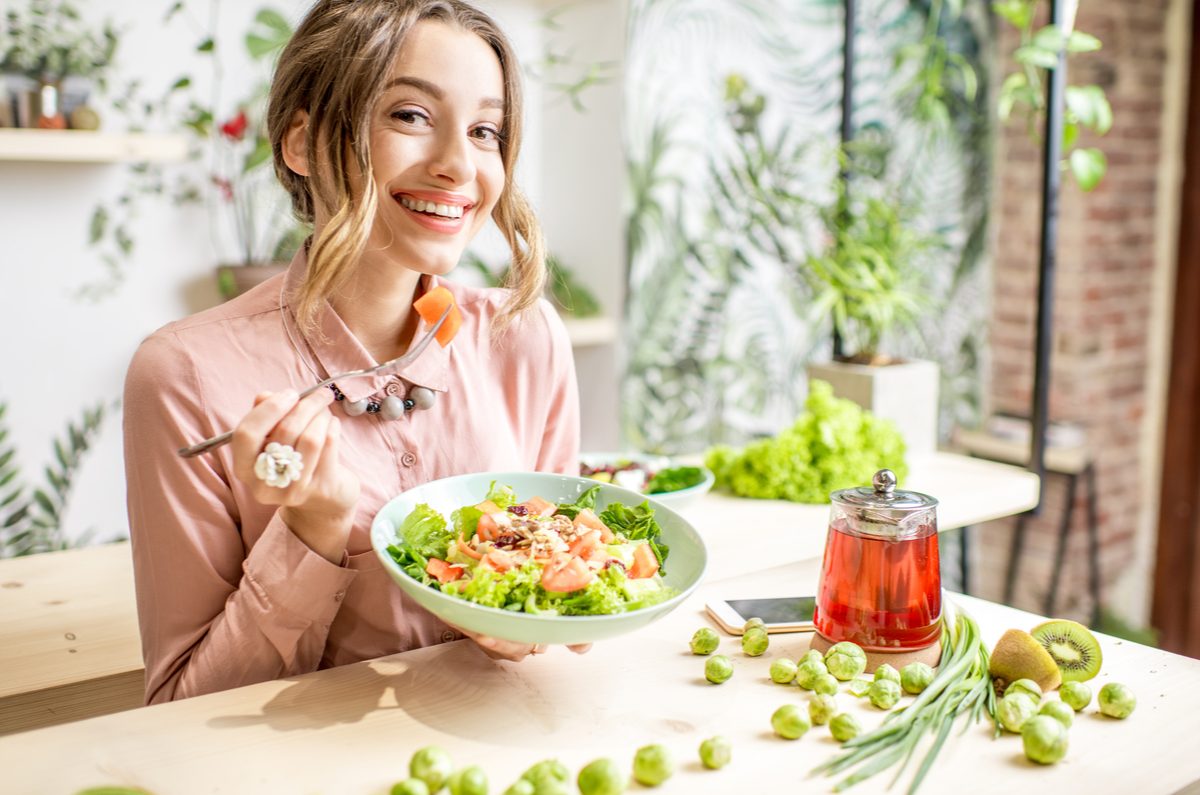
According to the Centers for Disease Control (CDC), nearly half of adults in the U.S. of 116 million people have high blood pressure or hypertension. Left undetected or controlled, high blood pressure can lead to a variety of health issues including a heart attack, stroke, heart failure, kidney disease, vision loss, and even sexual dysfunction.
Luckily, diet does play a role in helping to manage blood pressure. Below are four eating habits to help keep your blood pressure in check. Read on, and for more, don’t miss 5 Eating Habits Secretly Increasing Your Blood Pressure.
Eat more fruits and vegetables.
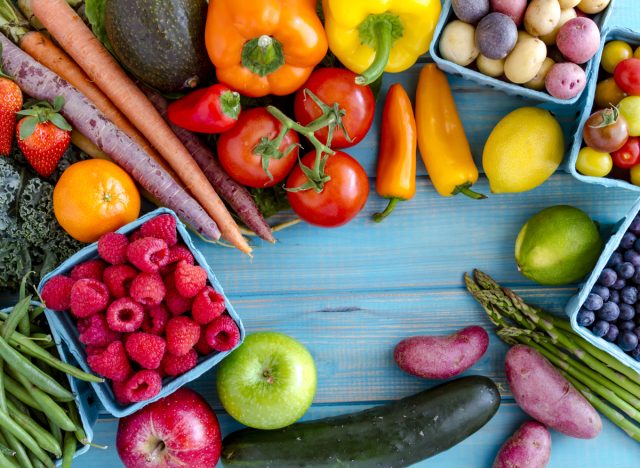
The DASH (Dietary Approaches to Stop Hypertension) diet was created by the National Heart, Lung, and Blood Institute (NHLBI) to help with high blood pressure. One of the key components of the diet is to eat lots of fruits and vegetables. The DASH Diet recommends eating four to five servings per day of each fruit and vegetable. Research has also shown that both short and long-term consumption of plenty of fruits and vegetables can help lower blood pressure.
It’s a misconception that fresh fruit and vegetables are best for your health. Frozen, canned, dried, and freeze-dried can also help meet your daily recommendations. A few of my favorite easy recipes to help add fruits and/or veggies to your diet include Sweet Potato Toast with Almonds and Blueberries, Yogurt with Berry Compote, and this Baby Greens and Mushroom Salad.
Get your milk, cheese, and yogurt daily.
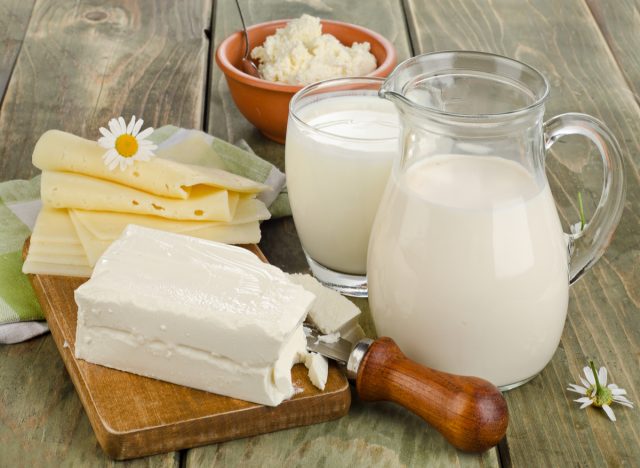
The original DASH study found that both systolic (top blood pressure number) and diastolic (bottom blood pressure number) were reduced when participants consumed not just fruits and veggies, but fruits, veggies, and milk and dairy. As such, the DASH Diet does recommend two to three servings of low-fat or fat-free milk, cheese, and yogurt daily. Quick and easy dairy recipes to try include Honey-Ricotta with Strawberries, Peanut Butter Cherry Smoothie, and this three-ingredient Easy Eggplant Parmesan.
Watch your sodium.
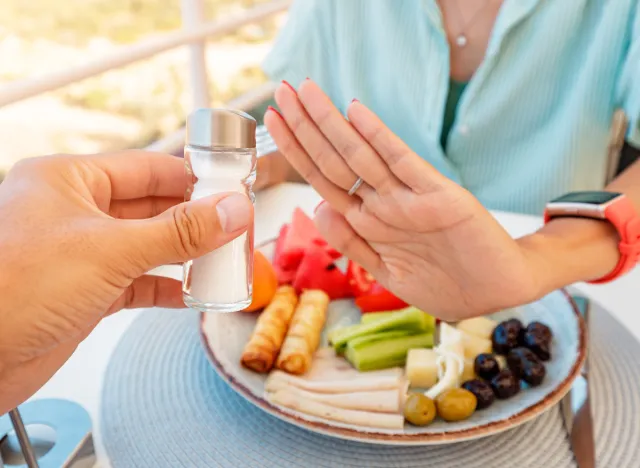
The 2020-2025 Dietary Guidelines for Americans recommend no more than 2,300 milligrams of sodium daily in order to help prevent or manage high blood pressure. However, the NHLBI recommends cutting back on sodium even further to 1,500 milligrams per day to help lower blood pressure even further.
The 2020-2025 dietary guidelines for Americans pinpoint top sources of sodium in the diet, which include sandwiches, rice, pasta, and other grain-based mixed dishes, pizza, chips, crackers, and soups. Restaurant dishes are also known for their super-high sodium amounts, so do read the nutrition facts if provided, or minimize dining out by cooking more at home so you have control over your sodium.
Opt for whole grains.
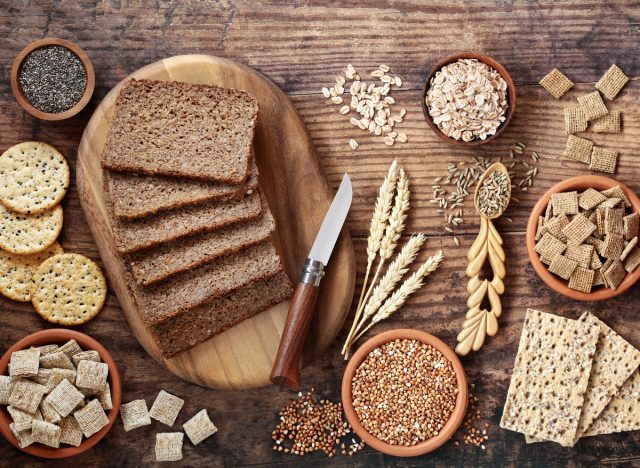
The DASH Diet recommends six to eight servings of grains daily with an emphasis on whole grains. A 2020 published study found that participants who ate whole grains more often, classified as “sometimes or always” were associated with lower odds of high blood pressure compared to participants who did not consume whole grains. Researchers concluded that consuming more whole grains may decrease the risk of developing hypertension.
Whole grains include brown rice, quinoa, 100% whole wheat bread, and oats. A few simple whole grain recipes you can try include my Brown Rice with Shallots, Meal Prep Nutty Raisin Oatmeal, and Lemon-Garlic Spaghetti with Shrimp and Spinach.

